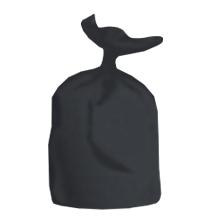How we apply withdrawal of allowances
You may find when you get your final assessment for a year of charge that you have not been given any allowances or reliefs, or you have been given less than the full amount.This is because the States of Deliberation made the decision to withdraw the personal and other tax llowances from individuals, where their income is over a certain amount.
If you have recently arrived in Guernsey, or if you leave the Island, the level of income, over which the allowances and deductions are withdrawn, will be pro-rated for the time you have been in Guernsey.
Frequently Asked Questions
At what level do the withdrawals start?
- The withdrawal of personal allowances and deductions start when your income exceeds the limit set by the States of Deliberation
- The limit for each calendar year is:
| 2017 | 138,684 |
| 2018 | 142,896 |
| 2019-2022 | 100,000 |
| 2023 | 90,000 |
| 2024 | 80,000 |
What allowances and deductions are withdrawn?
- For 2017 the only allowance to be withdrawn was the personal allowance.
- With effect from 1 January 2018 all of the following are withdrawable:-
- Personal allowance
- Age related allowance (this allowance is zero from 2020)
- Dependent relative allowance
- Infirm person's allowance
- Housekeeper allowance
- Charge of children allowance
- Mortgage interest relief
- Pension contributions over £2,500
How are the allowances and deductions withdrawn?
- The allowances and deductions are withdrawn at the rate £1 for every £5 the income is above the limit.
What order are the allowances and deductions withdrawn in?
- The allowances and deductions are withdrawn in the following order:
- Personal allowance
- Dependant relative
- Charge of children
- Infirm person
- Housekeeper
- Mortgage interest relief
- Pension contributions (apart from £2,500)
- Once all of the personal allowance has been withdrawn, then the dependant relative allowance will be reduced, if there is no dependent relative claimed then any charge of child will be withdrawn. This will continue until all the allowances and deductions (except for £2500 of pension contributions) have been removed.
How do the withdrawal of personal allowance and other allowances work if I am married or in a civil partnership?
- For tax years prior to 2023:
- Each spouse's income and entitlement to allowances is looked at separately, as shown in the examples below (which are based on 2022 income and allowances). Where an individual does not need all of their allowances, the unused allowance is automatically transferred to their spouse, and treated as if it was their allowance. If that spouse's income is high enough, the allowances transferred will be withdrawn.
- After 2023:
- If an individual thinks that they will not use all of their personal and other allowances, they can be transferred to their spouse. To do this, use the update coding notice request form. Once allowances have been transferred, if the receiving spouse is a high earner, these allowances will be subject to withdrawal in the same manner as their own allowances.
- Please be aware that it is only the unused amount can be transferred and if it turns out that the individual who transferred their Allowance will in fact need it, then it will be removed from the spouse's account. This may then create a tax bill for the individual who was in receipt of the Allowance.
- If the couple separate, the Allowance will be pro-rated. However, as above if the individual who transferred it then does need it, the spouse who had been in receipt of it will no longer have its benefit and will likely need to pay additional tax as a result.
| Spouse 1 | | Spouse 2 | |
| Income | 300,000 | Income | Nil |
| Personal Allowance | (12,175) | Personal Allowance | (12,175) |
| Transferred from spouse 2 | (12,175) | Transferred to spouse 1 | 12,175 |
Allowances withdrawn
(300,000 - 100,000) / 5 = 40,000 | 24,350 | | |
| Taxable income | 300,000 | Taxable income | Nil |
| Spouse 1 | | Spouse 2 | |
| Income | 150,000 | Income | 8,000 |
| Personal Allowance | (12,175) | Personal Allowance | (12,175) |
| Transferred from spouse 2 | ( 4,175) | Transferred to spouse 1 | 4,175 |
Allowance withdrawn
(150,000 - 100,000) / 5 = 10,000 | 10,000 | | |
| Table income | 143,650 | Taxable income | Nil |
| Spouse 1 | | Spouse 2 | |
| Income | 5,000 | Income | 185,000 |
| Personal Allowance | (12,175) | Personal Allowance | (12,175) |
| Transferred to spouse 2 | 7,175 | Transferred from spouse 1 | ( 7,175) |
| | | Allowance withdrawn
(185,000 - 100,000) / 5 = 17,000 | 17,000 |
| Taxable income | Nil | Taxable income | 182,650 |
What happens if I claim an allowance other than the personal allowance and my income is above the limit?
- The same principle applies to any additional allowances claimed, whether that is a dependant relative (DRA), charge of children (COC), infirm person or a housekeeper allowance, or more than one of these.
- If your income is high enough then the allowances (or a part of them) will be withdrawn, to the extent that they need to be, in the order as shown above.
- For example Mr A has a son receiving higher education and is able to claim a dependent relative allowance (a claim has been made in prior years). He also claims the charge of children allowance. His income exceeds the £100,000 limit, therefore an adjustment needs to be made as follows:
| Mr A (Single Person) | |
| Example using 2022 figures | |
| Income | 180,000 |
| Personal allowance | (12,175) |
| Dependent relative allowance | (3,950) |
| Charge of child allowance | (8,275) |
Allowance withdrawn
(180,000 - 100,000) / 5 = 16,000 | 16,000 (so in effect 125 DRA and 8,275 COC given) |
| Taxable income | 171,600 |
- If his income had been £230,000 all of the allowances would have been withdrawn, 230,000 - 100,000 = 130,000/5 = 26,000 allowances to be taken away and his allowances totalled 24,400 (12,175 + 3,950 + 8,275)
What happens if I have a mortgage and my income is above the limit?
- Mortgage interest is a withdrawable deduction and so it will be withdrawn gradually where a person's income exceeds the £90,000 limit for 2023, and the personal allowance (and any other allowances claimed) have been withdrawn - see the order of withdrawal shown above.
| Mr B (Single Person) | |
| Income | 165,000 |
| Personal Allowance | (13,025) |
| Mortgage Interest | (3,500) |
| Allowance withdrawn (165,000 - 90,000) / 5 = 15,000 | 15,000 (so in effect 1,525 Mortgage Int. Relief given) |
| Taxable income | 163,475 |
- Mortgage interest relief on a principal private residence is restricted to £3,500 for an individual during 2023.
What happens if my employer contributes to my pension scheme and my income is above the limit?
- The contributions made by your employer to your pension scheme are generally not taxable and are an exempt benefit. This will not change if your income is above the limit. However, if you request that your employer makes additional contributions in order to try and limit the withdrawal of your allowances, for example by negotiating a lower salary or no annual increase/pay rise so your employer can increase the contributions made into your pension scheme, then the employer contributions may be considered as part of your employment income and would be taxable.
What happens if I pay into a personal pension and have unused contributions to carry forward?
- Any unused contributions carried forward are subject to withdrawal, regardless of whether any contributions are made to a pension scheme in the year.
- Example 1
- Mr X has a taxable income of over £750,000 per annum. He contributed £20,000 into his personal pension scheme in 2017 and therefore had £30,000 of unused balance carried forward at 31 December 2017 (as the maximum he was entitled to deduct in 2017 was £50,000 and the only allowance to be withdrawn in 2017 was the personal allowance).
- He contributed a further £35,000 into his personal pension in 2018 (the maximum amount), however due to the withdrawal of allowances the maximum he was entitled to deduct in 2018 was £1,000. He therefore continues to retain the £30,000 of unused balance carried forward (from 2017) at 31 December 2018.
- Mr X then contributed £80,000 into his personal pension in 2019. For the purposes of determining the retirement annuity allowance it is only £35,000 (prescribed by Resolution of the States) and the unused balance carried forward amounting to £30,000 that can be taken into account. This total of £65,000 is then subject to the withdrawal of allowances, not just the £35,000 allowance for 2019. Mr X will therefore have no unused balance carried forward as at 31 December 2019 and will receive the £1,000 allowance for 2019.
- Example 2
- Mr Y had a taxable income of £100,000 and made personal pension contributions of £20,000 in the years 2017 and 2018. Mr Y therefore had £45,000 (being £30,000 from 2017 and £15,000 from 2018) of unused balance to carry forward at 31 December 2018 (as his income was below the withdrawal threshold).
- In 2019, Mr Y had taxable income of £750,000 but chose not to contribute to his pension. The maximum amount Mr Y would be entitled to deduct in 2019 (and therefore is subject to the withdrawal) is (a) the maximum amount set by regulation (currently £35,000) and (b) the amount of the unused balance carried forward (£45,000). Owing to the level of Mr Y's income in 2019, the unused balance of £45,000 is subject to withdrawal in its entirety and therefore Mr Y has no unused balance to carry forward at 31 December 2019.
I have had all of my allowances withdrawn from my coding notice, however I think I should still be entitled to a proportion of them, what should I do?
- If your income is above the withdrawal threshold (£90,000 for 2023, £80,000 for 2024), your allowances may have been removed from your coding notice automatically, however if you think you will be entitled to some allowances, please contact us via the update coding request form, with details of the income you expect to have for the year and details of what allowances you are entitled to (such as mortgage interest and pension contributions to be paid).
- We will adjust your coding notice to give you back some allowances, based on the estimate of your income. This will stop any large under/overpayments happening, as long as your estimate is accurate.













